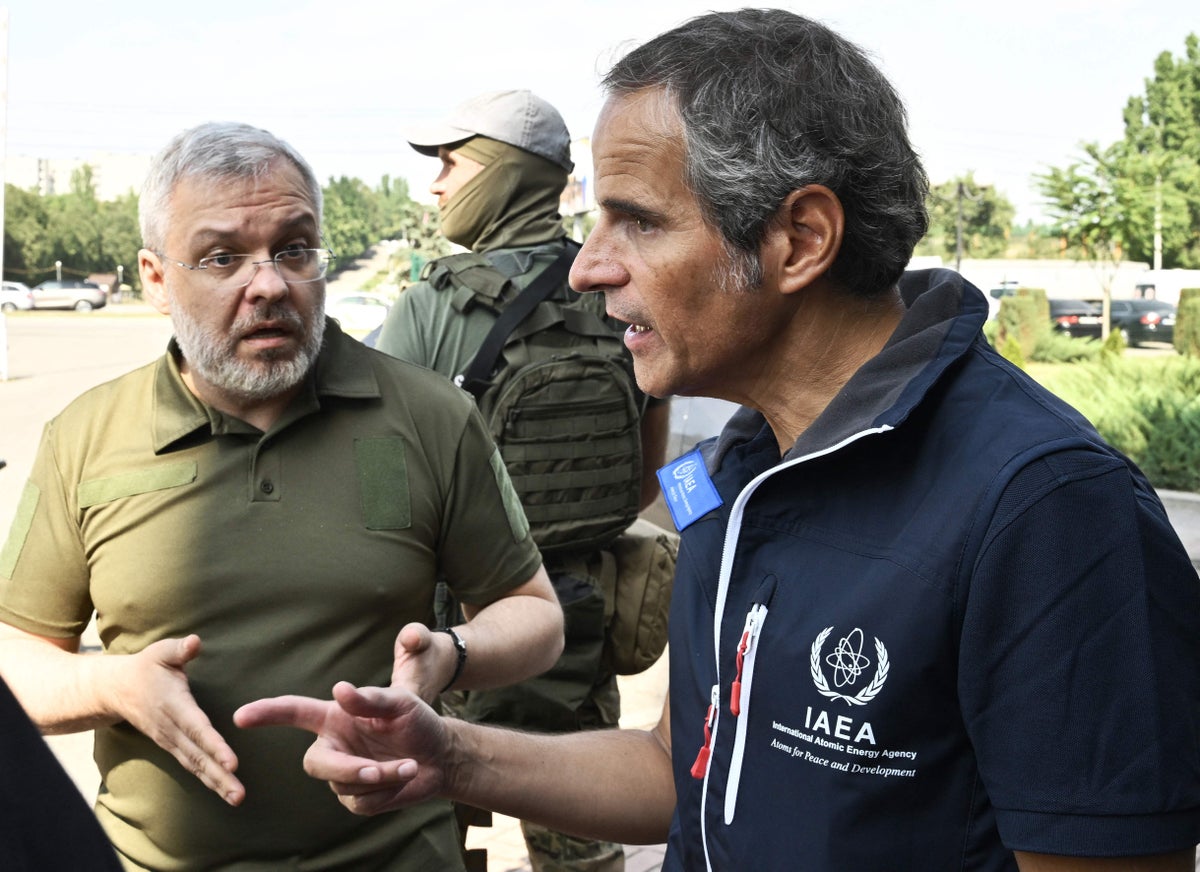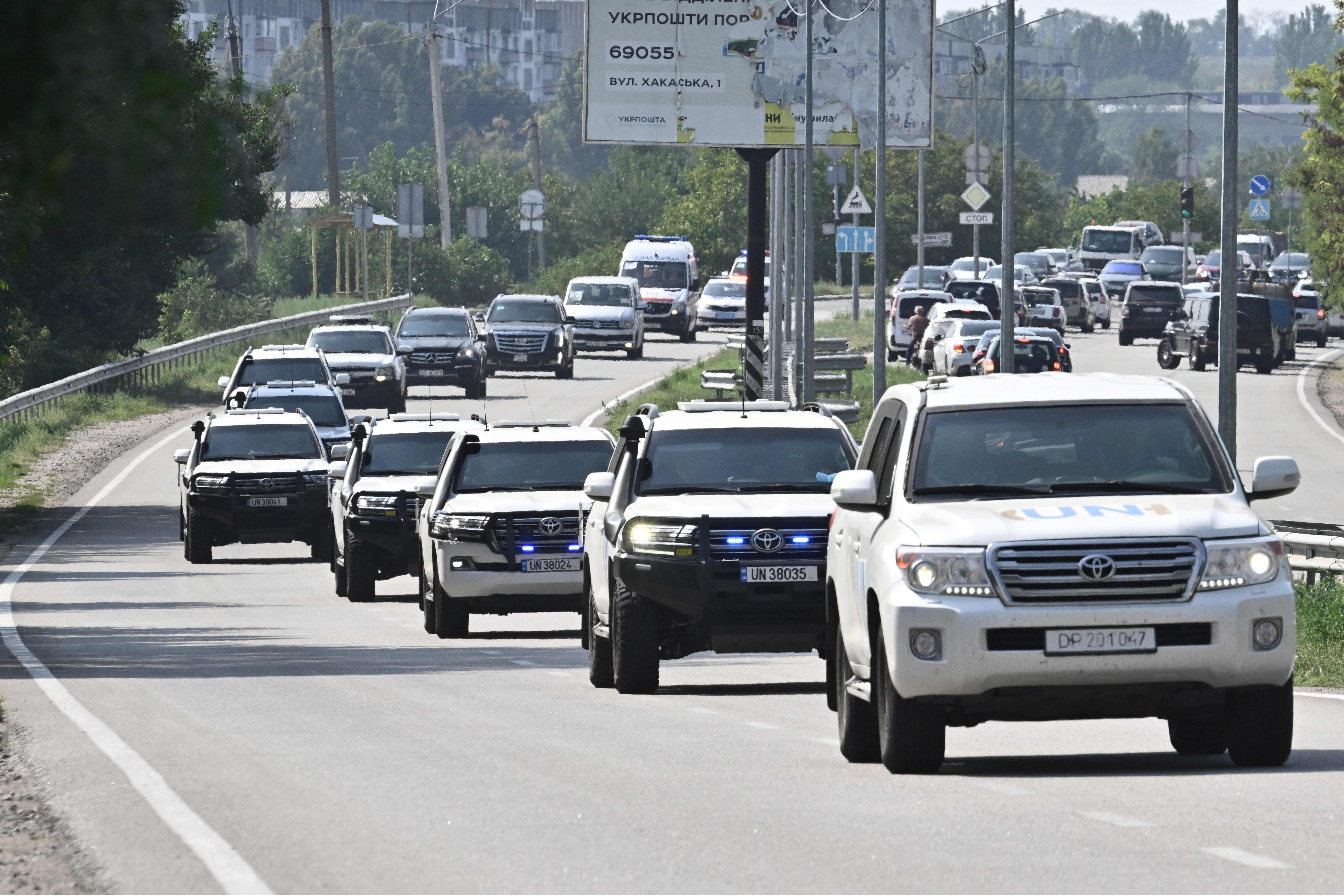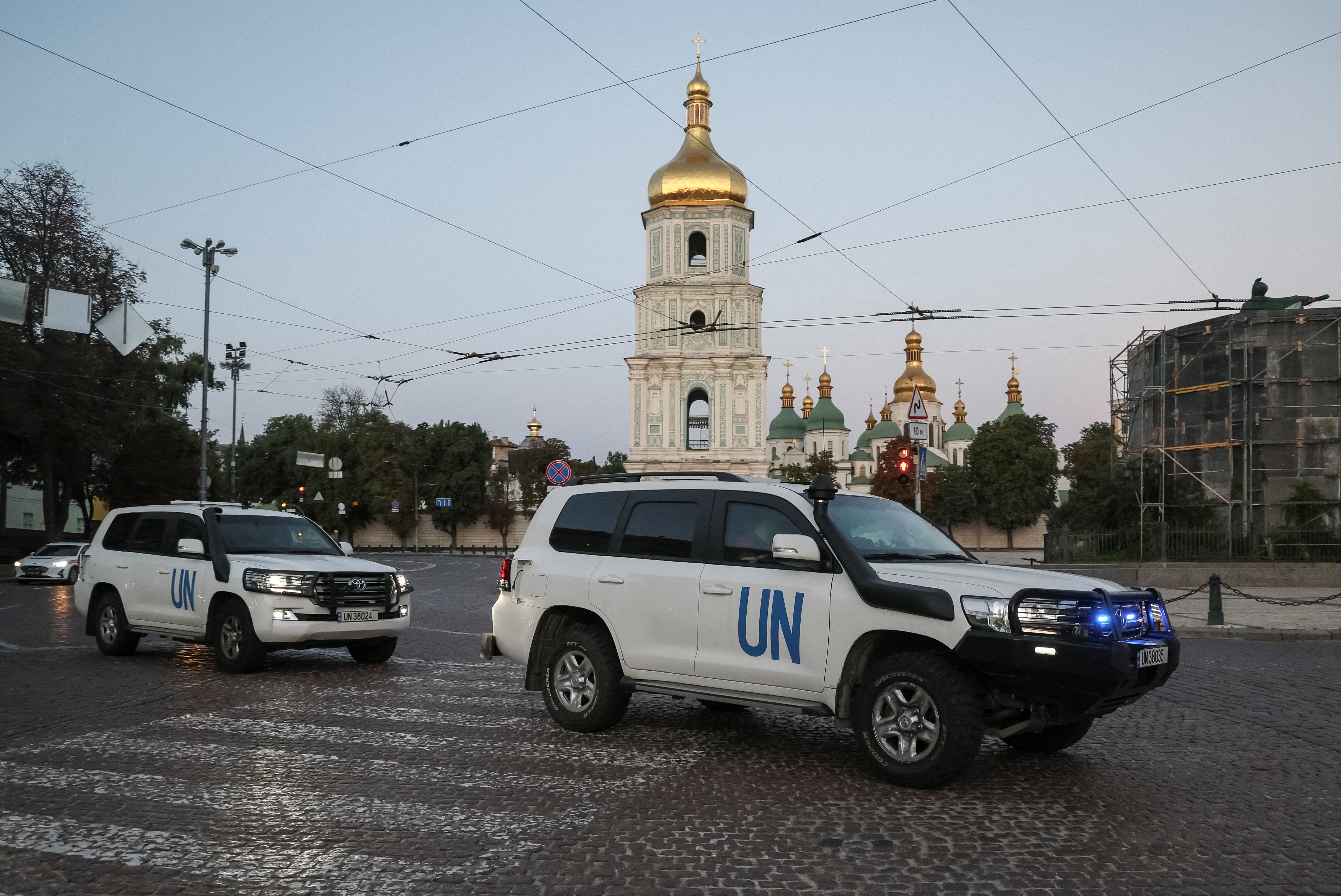
UN inspectors headed into Ukraine’s battlefield on Wednesday to visit the Zaporizhzhia power plant after warnings that fighting near the nuclear facility risked catastrophe.
Russian-installed officials in Enerhodar, the occupied town neighbouring Zaporizhzhia, claimed that Ukrainian forces had fired within the plant’s grounds overnight.
The two sides have been trading accusations of reckless bombing in the vicinity of the plant, which was claimed by Russia in the early days of the war. For weeks now, Ukraine and Russia have accused each other of endangering the plant’s safety with artillery or drone strikes and risking a Chernobyl-style radiation disaster.
“We are going to a war zone. We are going to occupied territory,” Rafael Grossi, the head of the UN’s International Atomic Energy Agency (IAEA), said as his team headed out on the 280-mile journey southeast from Kyiv.

“This is the first time, it’s the first time anybody’s going to cross the front line,” he said, adding that he had received “explicit guarantees” from Russia that the mission of 14 experts would be able to work in the occupied plant.
Though Russian forces have taken control of the plant, Ukrainian workers keep it running.
Tass, a Russian state news agency, said the IAEA team was expected to arrive on Thursday morning. Russian-installed officials in the area near the power station suggested that the visit might last only one day, while IAEA and Ukrainian officials indicated it would last longer.
“The mission will take a few days. If we are able to establish a permanent presence, or a continued presence, then it’s going to be prolonged. But this first segment is going to take a few days,” Mr Grossi told reporters at a hotel in Zaporizhzhia.
Fighting was reported both near to the power station and further afield, with Kyiv and Moscow both claiming battlefield successes as Ukraine mounted a counteroffensive to recapture territory in the south.
Zaporizhzhia is a vital source of energy for Ukraine as the most significant of the country’s four nuclear power stations, which collectively provide around half of Ukraine’s electricity.

Shelling near Zaporizhzhia last week resulted in the plant being cut off from the electrical grid because of fire damage, causing a blackout in the region and heightening fears of a catastrophe in a country still haunted by the 1986 Chernobyl disaster.
Energoatom, Ukraine’s energy watchdog, warned that Russian attacks had damaged the plant’s infrastructure and risked “hydrogen leakage and sputtering of radioactive substances”. Ukrainian energy minister German Galushchenko said Kyiv was seeking international assistance to try to demilitarise the area.
“We think that the mission should be a very important step to return [the plant] to Ukrainian government control by the end of the year,” Mr Galushchenko told reporters. “We have information that they are now trying to hide their military presence, so they should check all of this.”
International bodies have expressed concern over the risks of fighting taking place close to the nuclear plant. The United Nations has called for a withdrawal of military equipment and personnel from Zaporizhzhia to ensure that it is not a target, while a G7 joint statement called for Russia to return the plant immediately to Ukrainian control.
The Kremlin has ruled out a retreat.

News of the inspections came as small amounts of radioactive isotopes were reported to have been detected in air samples collected in Kotka in southeast Finland, but there is no risk to humans and similar discoveries are “quite normal”, the country’s nuclear safety watchdog said on Wednesday.
“The observed radioactivity has no impact on the environment or human health, as the concentrations were very low,” the Radiation and Nuclear Safety Authority (STUK) said in a statement.
Finland, Sweden, Russia and the wider region have a number of nuclear power reactors.
“Small amounts of zirconium and niobium can escape into the air, for example, from the fuel of a nuclear power plant during plant maintenance,” STUK said.
During the collection of the sample, air currents were flowing to Kotka from the east and southeast, but the source of the radiation was unknown, it added.







